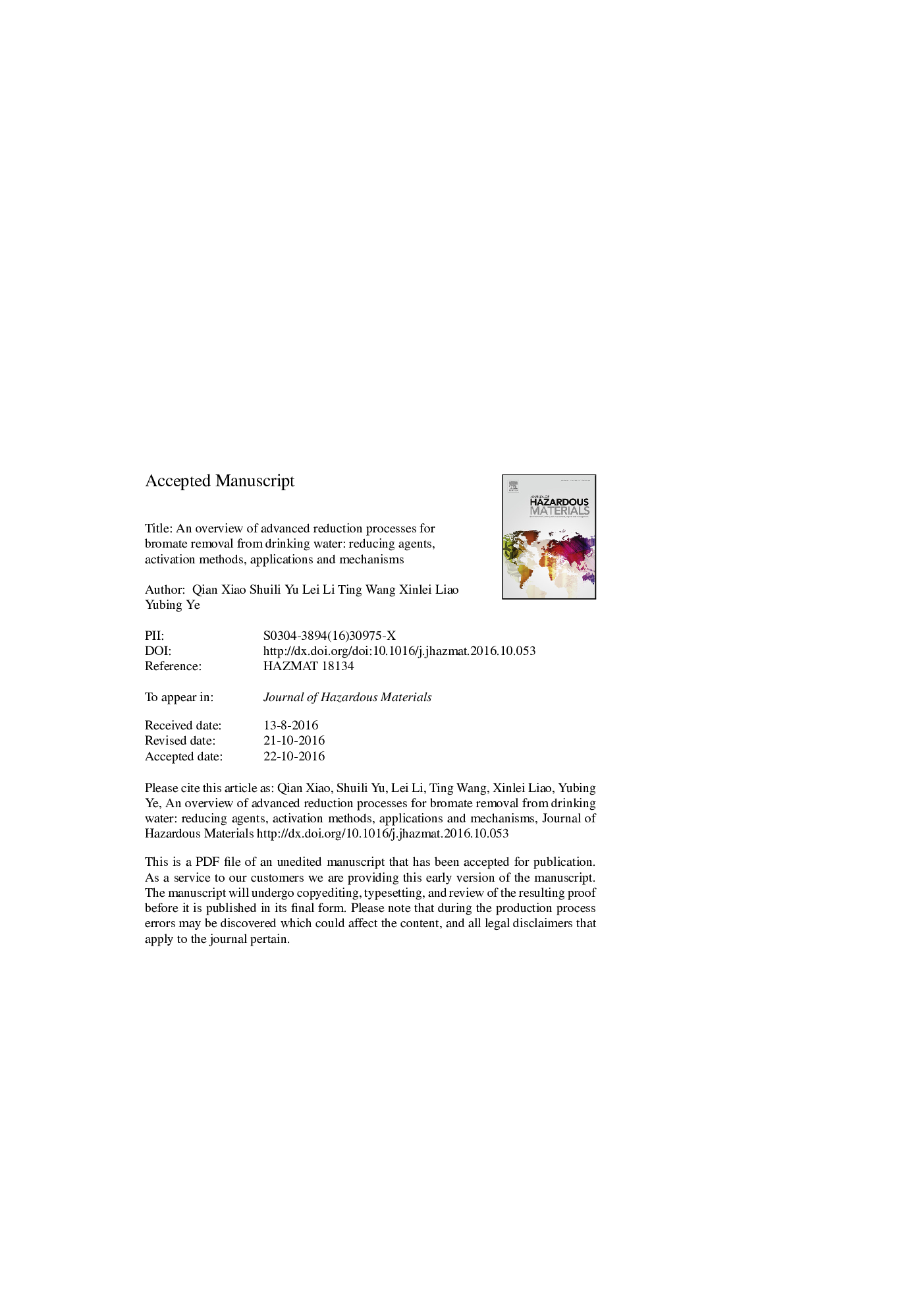| Article ID | Journal | Published Year | Pages | File Type |
|---|---|---|---|---|
| 4979847 | Journal of Hazardous Materials | 2017 | 38 Pages |
Abstract
Bromate (BrO3â) is a possible human carcinogen regulated at a strict standard of 10 μg/L in drinking water. Various techniques to eliminate BrO3â usually fall into three main categories: reducing bromide (Brâ) prior to formation of BrO3â, minimizing BrO3â formation during the ozonation process, and removing BrO3â from post-ozonation waters. However, the first two approaches exhibit low degradation efficiency and high treatment cost. The third workaround has obvious advantages, such as high reduction efficiency, more stable performance and easier combination with UV disinfection, and has therefore been widely implemented in water treatment. Recently, advanced reduction processes (ARPs), the photocatalysis of BrO3â, have attracted much attention due to improved performance. To increase the feasibility of photocatalytic systems, the focus of this work concerns new technological developments, followed by a summary of reducing agents, activation methods, operational parameters, and applications. The reaction mechanisms of two typical processes involving UV/sulfite homogeneous photocatalysis and UV/titanium dioxide heterogeneous photocatalysis are further summarized. The future research needs for ARPs to reach full-scale potential in drinking water treatment are suggested accordingly.
Keywords
Related Topics
Physical Sciences and Engineering
Chemical Engineering
Chemical Health and Safety
Authors
Qian Xiao, Shuili Yu, Lei Li, Ting Wang, Xinlei Liao, Yubing Ye,
